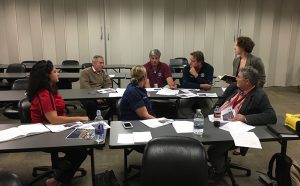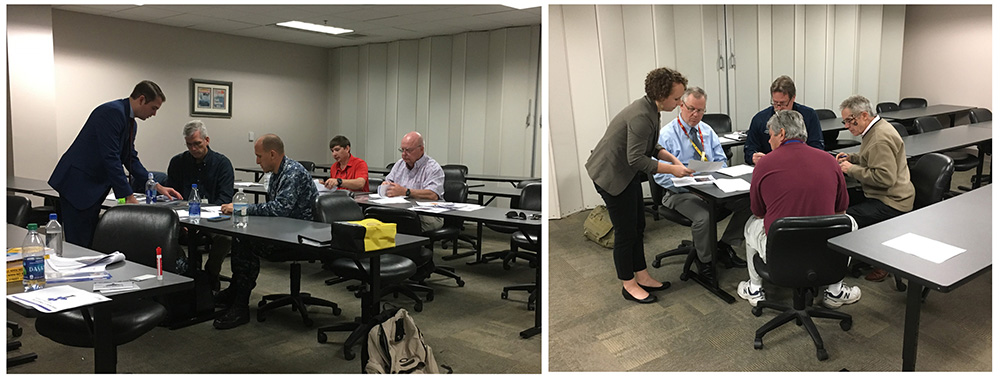Avoiding the Sugar Crash of IT Modernization
IT leaders across government are clearly re-energized about IT modernization, thanks to recent legislation, funding, and prioritization. It is a bit like the professional version of the end-of-school-year ice cream party many of us witness as our children set their sights on summer vacation. FedScoop’s IT Modernization Summit in March confirmed this excitement through interviews with more than 20 IT leaders from across government and industry.
Much of the chatter in the beltway about modernizing government technology systems focuses on cloud migration for email and reducing the profile for cyber attackers, but there are some foundational aspects of the way we think about IT modernization that we need to be considering as well. These strategies will push beyond the initial sugar high and into the sustainable successes we need to make IT modernization a reality over the long term.
Earn a seat at the table by framing technology in terms of mission impact
CIOs have long advocated for a “seat at the executive table” but it might not be clear to everyone else why this is so important. Unfortunately, some misguided souls may believe it is to provide a direct link to the help desk, to shepherd a pet project, or to get status updates on ongoing IT projects. Business function leads–like the COO or CFO–who already have a seat at the executive table understand how their key piece impacts the mission and have developed a capability to communicate in those terms. IT executives advocating for a seat at the table must be able to do the same by talking about how technology impacts the mission’s bottom line.
A good example of this comes from a story a colleague of mine shared recently. My colleague–a seasoned executive IT consultant–was meeting with an IT project manager and the IT project manager’s boss, who had responsibility for mission operations. The IT project manager had expressed frustration that outside technical teams had come to the facility to provide periodic system upgrades without giving any prior notice. The complaint began to ramble about how the unexpected outage would impact mean time to repair metrics and cause his team to work overtime that week. The IT project manager’s boss, shrugged off the incident and made it clear that periodic maintenance to IT equipment did not warrant her time and attention.
The executive IT consultant, who has earned a regular seat at the executive table and understands how to talk about technology in mission terms, explaining that the boss had unknowingly assumed specific operational risks during the maintenance period because the operating capability of their key missions systems was being reduced. And because the boss wasn’t aware of what was upgraded, how confident could she be that her mission capabilities were as effective now as they were prior to the upgrade? As our missions become more dependent on IT, so does our ability to effect mission outcomes.
We are modernizing government services, not technologies
People who use government services care that their problem gets solved with as little effort as possible. Well-designed services should function smoothly and intuitively for its customers. But poorly designed services put the burden on the customers to get the service to function properly. This is too often the result of the false promise of technology – that through the magic of AI, big data, and [insert IT buzzword], we can take poorly designed processes and make them serve people’s needs better.
This is why customer experience is so critical to our IT modernization efforts. The role of customer experience in these IT modernization initiatives is not just designing a better user interface or pushing more short surveys at the point of service – it is fundamentally understanding the services that government provides. Mat Hunter, Chief Design Officer at the Design Council in the UK, explains the concept as
“[Shaping] service experiences so that they really work for people. Removing the lumps and bumps that make them frustrating, and then adding some magic to make them compelling.”
Technology plays a major role in the way we deliver government services at scale. It impacts the reliability, security, and availability of government services; it provides us the power to customize and tailor the experience individually in real time for billions of people. And yet, for as much we rely on the technology to make the services work, we must always remember that technology is not the end game. We need to continue to put IT in the service of people and remember that it is just a tool that enables a human-to-human connection to occur faster, more reliably, and more securely.
Innovation comes from deep customer understanding
With $100 million of Technology Modernization Funds on the table, government leaders are vying for some kind of advantage to get a leg up on the competition. I was speaking to a well-known innovation leader last week who indicated she fielded several calls from agencies about whether her team could use “innovation” help them find that next golden egg.
The answer lies within another capability that is already built into the IT modernization framework – service delivery analytics. We need to ask a few key questions about how we are serving our customers today to help target our modernization and improvement efforts for the future:
- “What does the customer care about?”
- “What segments of the customer journey are we really good at and how do we ensure that every customer receives that quality service, every time?”
- “What are we doing today that causes our customers frustration; most importantly, where does that frustration reach a level where they abandon or disengage?”
- “How might we uncover latent demand or untapped potential where there is a need that is not yet being served?
The answers to these questions, at least in part, begin with an understanding of how service delivery is being measured today. Service delivery analytics can be a powerful engine to help resolve immediate customer issues but also help engage customers in an ongoing dialogue about where they are going long term.
It is a tremendous opportunity to follow customer needs and understand the delta between how those needs are met today, how those needs are evolving, and what you need to differently tomorrow in order to meet them.
GSA’s Center of Excellence Director (and Director of Technology Transformation Services and Deputy Commissioner of the Federal Acquisition Service) Joanne Collins Smee remarked at FedScoop’s IT Modernization Summit that
“Agencies need to enhance the capabilities of IT workers who are already in place.”
She also acknowledged USDA’s strategy to bring in top IT talent to help drive culture change across the organization.
Sustaining momentum for long term change in IT modernization
With the current energy and momentum for government IT modernization comes great opportunity. As we continue to position IT modernization for long term success, it is essential that agencies understand these foundational aspects of IT services and continue to expand the capabilities of boundary spanners who can effectively communicate in the language of the technology, the language of the mission, and the language of the customers.



 Recently, I traveled to Florida with a co-worker to test some service prototypes with a government audience. Long story short, once we arrived, everything went wrong.
Recently, I traveled to Florida with a co-worker to test some service prototypes with a government audience. Long story short, once we arrived, everything went wrong. Conclusion: Including these prototyping lessons for government in future events
Conclusion: Including these prototyping lessons for government in future events










